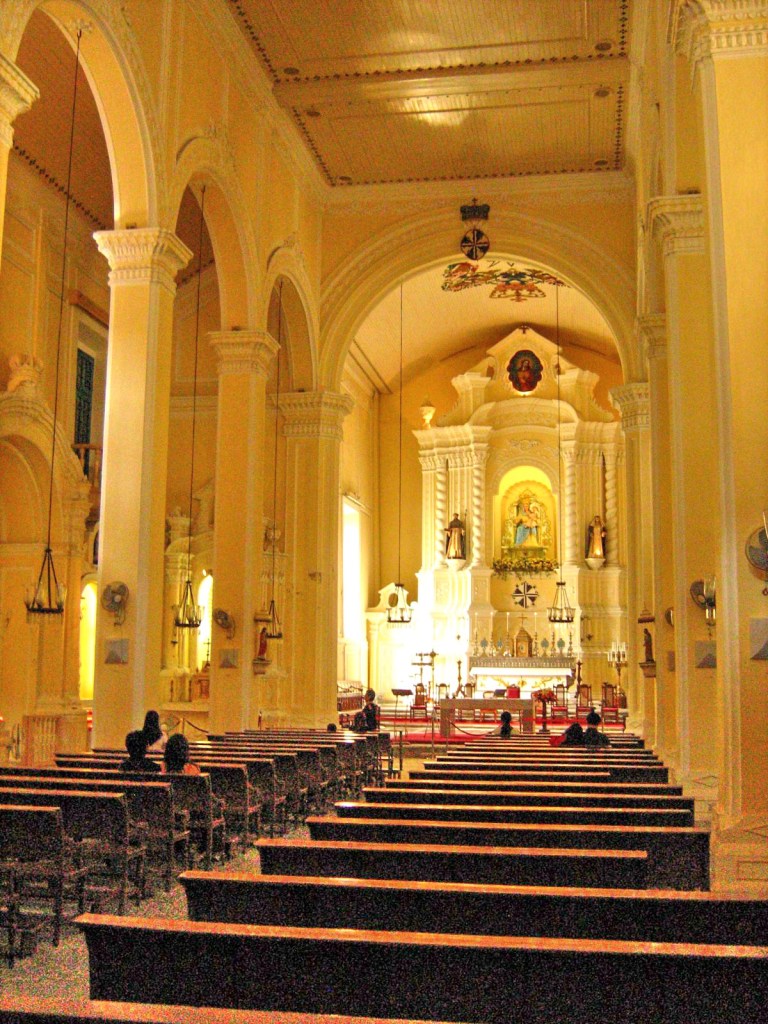When we were in Largo do Leal Senado, my kids and I visited the Church of St. Dominic, situated right in the middle of the square. Built in 1587 by 3 Spanish Dominican priests, it is one of the most beautiful churches in Macau. Originally built in wood, it was, in 1828, rebuilt in stone and was restored in 1994.
The first Portuguese newspaper, A Abelha da China (The China Bee), was published here in 1822. The church’s basic layout is influenced by both Portuguese and Spanish styles and its architecture is Jesuit Mannerist. The church is now part of the UNESCO World Heritage Site Historic Centre of Macau.
We also dropped by bell tower at the back which was modified into the small Treasure of Sacred Art Museum. On the right side of the church is the sacristy (dedicated to Our Lady of the Rosary), the only surviving part of the old monastery/convent that was built with the church. Here, we went up the stairs that lead to the museum located at second and third floors.
When the Religious Orders were abolished in Portugal in 1834, the museum received many articles of sacred art that are now presently displayed. The museum, opened to visitors in 1997, occupies what is left of the ancient cloister and also the other rooms that are still connected to the church.
There are approximately 300 pieces of excellent quality artifacts, many of which are also from Macau. that date back from the 17th to the 19th centuries. The rich collection includes gold objects, statues, richly ornamented canonicals, religious paintings and other liturgical vessels.




